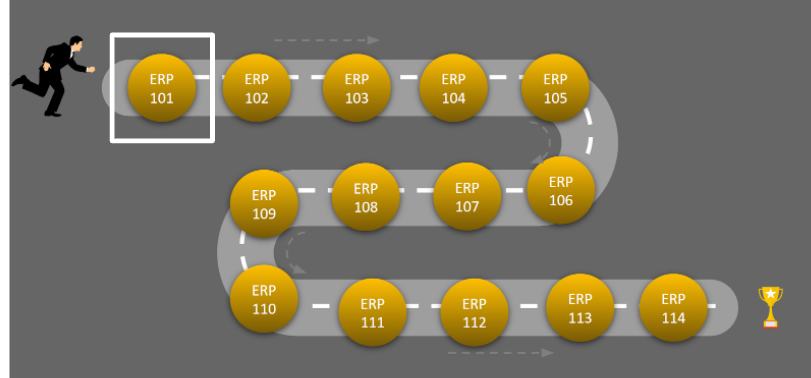As your business grows and becomes more complex, the need for a solution that can manage all your core business processes becomes increasingly important. Note that manual systems are not equipped to handle the level of complexity and data that modern businesses need. Enterprise Resource Planning, or ERP, is a solution that can integrate all your core business processes into one comprehensive system very effectively. However, before you can make use of this technology, you need to understand the basics of an ERP system, including how it works, the benefits it offers and potential challenges.
What is ERP?
An Enterprise Resource Planning system is a comprehensive computer software solution that enables businesses to manage their core business processes in an integrated environment. It combines different applications such as financial management, customer relationship management (CRM), supply chain management, inventory control, human resources management, and more into one unified system. This allows for greater efficiency by eliminating manual processes, reducing duplication of efforts, and providing real-time access to data across departments.
How Exactly Does an ERP System Work?
ERP systems are made up of two main components: the software and the database. The software is responsible for controlling all aspects of business operations, from tracking customer orders to managing accounting operations. The database stores all of the data associated with each department, such as sales, inventory, customer information, and more. Firstly, software is installed on the business’s computers. The database is then created and populated with data collected from multiple sources, such as transactions in sales or accounting. This allows for a central repository of all the necessary information.
The software then integrates these separate modules into one unified system that provides real-time access to data throughout the organization. This means that processes in different departments are linked together in a cohesive, streamlined system. For example, when an order is placed by a customer, the customer information is stored and updated in the database. This then automatically updates other departments, such as inventory management and finance to ensure that there are no delays or errors.
Benefits of ERP Systems
Firstly, businesses can save time and money by eliminating manual processes and streamlining operations. This is because the single source of data eliminates duplicated effort between departments when data needs to be entered multiple times or transferred from one database to another. Secondly, an ERP system can provide greater visibility into operations since all departments are connected and data is updated in real-time. This enables businesses to get an accurate picture of their performance at any time.
Finally, ERP systems are extremely reliable as they use advanced encryption technology that protects sensitive information from unauthorized access. Furthermore, backup and recovery features ensure that data remains safe in the event of an emergency.
Potential Challenges
These systems are complex and require a certain level of expertise to manage and maintain. Therefore, businesses must invest time and resources into training staff who will be responsible for managing the system. Additionally, implementation can take some time as the system needs to be configured to meet the specific needs of the business. Finally, due to their complexity, an ERP system can also be very expensive and require significant upfront investments.
How To Get Started With ERP
For businesses looking to implement an ERP system, the first step is to consult with experts in the field who can help develop a plan that meets your specific needs. Once you have identified your requirements, it’s important to evaluate different vendors and software solutions to ensure that they meet those needs. After selecting a vendor and software, the next step is to plan out the implementation process. This includes training staff, testing the system, migrating data, and ensuring that everything is running smoothly before going live.
These systems offer many benefits for businesses looking to become more efficient and effective in their operations. Regardless of the size of your business, understanding the basics of an ERP system and how it works can give you a better idea of how it can be used to streamline processes and increase efficiency.
ERP are becoming increasingly popular as businesses for ways to become more and effective in their operations. Despite being a complex system, understanding the basics of an ERP system and how it works can give you a better idea of how it can be used to streamline processes and increase efficiency. With proper implementation and training, businesses can make use of an ERP system to improve their performance and achieve greater success.
